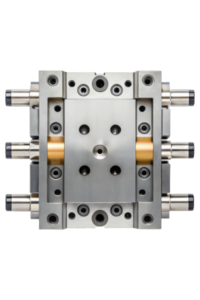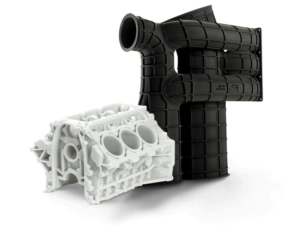Rapid prototyping services are still considered to be the linchpin in product development. In a world where the innovation race is fast, the need to adapt even faster has become the mantra of forward-thinking businesses. This article explores the intricacies of rapid prototyping and how partnering with the right service can tip the scales in favor of faster and smarter product development cycles.
The Critical Step Between Concept and Market
Every engineer knows that the conception of a product is just the beginning; and that bringing an idea to life and getting it market-ready is a complex process. Rapid prototyping services bridge the gap between conceptualization and actualization. They allow for quick, iterative cycles: from creating the first tangible version (the prototype) to refining it multiple times until it meets the exact requirements. Fast iterations mean faster learning, leading to better products and quicker market entry.
Speed is Everything – Why Rapid Prototyping Matters
The ‘rapid’ in rapid prototyping is a necessity. Businesses operate in a fast-paced environment, and product lifecycles have a fraction of the time they once did. With 3D printing and other advanced prototyping technologies, what once took weeks or months can now be turned around in days, and occasionally, hours.
However, speed alone does not guarantee success. A rapid prototype should mirror the final product as closely as possible regarding both functional and aesthetic aspects. High-fidelity prototypes are essential for market testing, internal evaluation, and gaining stakeholder confidence.
The Ripple Effect of Smart Prototyping
Smart prototyping goes beyond just speed and detailed replication—it’s about agility and foresight. Engaging with a rapid prototyping service provider, such as Quickparts, that offers consulting on materials, manufacturing techniques and design improvements can save a remarkable amount of time and resources in the long run. It prevents potential pitfalls before the actual manufacturing begins, ensuring the end product is launched fast and hits the market running.
Choosing the Right Rapid Prototyping Partner
Selecting the right partner for rapid prototyping is a process that weighs heavily on the services offered, the technology stack, the level of expertise, and the company’s approach to customer service and support.
Technology Stack: More Than Just 3D Printing
While 3D printing may be the first technology that springs to mind when considering rapid prototyping, the best partners offer a suite of options, including CNC machining, urethane casting, and even die-casting for certain applications. This pool of capabilities means more flexibility in choosing the right technology for each stage of the prototyping process, which can be critical for various products.
Leverage Experience: The Value of a Seasoned Partner
Experience in diverse industries and applications can be incredibly beneficial. An experienced partner can often predict challenges and pitfalls, offering workarounds and anticipating potential issues before they arise.
Customer Service and Support: The Often Overlooked Aspect
A great prototype is the result of a great partnership. A company that is responsive, communicative, and attentive to customer needs can transform the prototyping process from a transactional service to a collaborative experience that truly benefits the client.
Integrating Prototyping in Your Innovation Strategy
For some, rapid prototyping services are an occasional necessity, a one-off for a special project. However, those truly invested in continuous innovation have integrated these services into their core strategy, making them part of the innovation loop. This integration allows companies to continually test new ideas, pivot rapidly in response to market changes, and evolve with greater agility.
Iterative Development Cycles: The ‘New Normal’
The agile development methodology, with its focus on iterative cycles and responsiveness to change, is not just for software—it’s a model that is also revolutionizing hardware development. Rapid prototyping services enable hardware to keep up with the rapid changes often seen in software and user experience.
Product Evolution: From Launch to Lifecycle
Releasing a product into the market is no longer the end of the development process; it’s just the beginning. Post-launch, products must evolve quickly to meet user feedback and market demands. Rapid prototyping supports a product’s entire lifecycle, enabling continuous improvement and evolution. If your service provider also offers production services, you’re on to a winner. Choose a bureau that offers low volume manufacturing, or at the very least, a relationship with trusted partners who do support your manufacturing needs.
Future-Proofing Through Prototyping
As we move into an age of smart manufacturing and the Internet of Things (IoT), prototyping services adapt and innovate. From ‘lights-out’ 24/7 manufacturing to ‘digital twins’ that simulate a product’s performance, the future promises even faster, more accurate, and innovative prototyping services.
Leveraging the IoT for Rapid Prototyping
The same technology powering the IoT is entering manufacturing and prototyping systems. This means more data-driven decisions, greater automation, and the potential for even faster turnaround times.
The Role of ‘Digital Twins’ in Prototyping
Digital twins are virtual replicas that work alongside physical assets, enabled by real-time sensor data. In rapid prototyping, a physical prototype and its digital twin can be used in unison to test and refine performance, offer predictive maintenance, and ensure that the product is ready for the market with very few actual physical iterations.
Making the Most of Rapid Prototyping
The competitive edge in product innovation is often not just about coming up with ideas first, but about bringing them to market fast and with high quality. Rapid prototyping services are the enablers of that edge, offering speed, precision, and the ability to prototype smartly. Businesses can stay ahead of the curve by choosing the right partners and fully integrating these services into the innovation strategy.
Embracing rapid prototyping doesn’t mean sacrificing quality or cutting corners; it means enhancing the development process with smarter, faster tools. With the right approach and partner, rapid prototyping services can be the key to unlocking new levels of product excellence.


